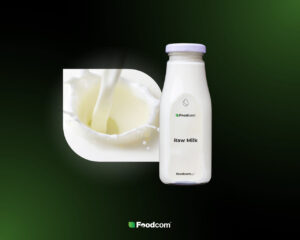- Research is underway into changes in the feeding of cows, mainly directed at reducing the amount of cereals in their diet that can be allocated to human nutrition.
- Cows fed in this way may show similar milk yields.
- The fat and protein content of the milk produced may decrease.
- Key research into changing cow diets is ongoing in Ireland and Germany.
Restriction in the diet of cows of components of the human diet
The main objective of changing the diet of cows is to limit their intake of food components that may be part of the human diet. This is crucial due to food shortages among the growing human population. Cows, on the other hand, have the ability to digest food that is inedible for humans, such as fresh or pickled grass. However, high-yielding cows are often fed concentrated mixtures with wheat, maize, other cereals, sugar beet or soybean meal.
The current drive is to keep the milk yield of cows at the same level by changing their diet. Solutions are currently being considered to include ‘low edible’ human foods such as rapeseed meal or distillers’ grains in the feed. In Ireland, research is underway exploring this issue, and also in Germany, dairy cows’ diets are being redesigned. Their diets will specify small intestine digestible protein rather than usable protein, which should increase feed efficiency, nitrogen utilisation from feed, reduce nitrogen excretion and feed cost. Methionine supplementation will be key here. Work is also underway to introduce microbial protein into cow diets.
Irish study points the way forward
The Agri-food and Biosciences Institute carried out a study in Northern Ireland to assess the performance of cows fed a feed with less human edible ingredients. The forage tested had a similar amount of protein and provided a similar amount of energy, but contained less starch. Milk composition and milk yield of the cows were studied. The study used the eFCR, an edible feed conversion ratio defined as the amount of milk produced fit for human consumption divided by the amount of human edible feed used to produce that milk.
It was found that changing the diet did not significantly affect the performance of dairy cows in mid- or late lactation, but may have a greater effect on cows in early lactation. In contrast, all cows produced milk with lower fat and protein content. In contrast, cows fed on feed fit for human consumption produced lower eFCR. The increase in eFCR in cows fed less concentrated feed shows that we can make greater use of by-product ingredients in dairy cow diets. Further research is ongoing to assess the long-term effects of feeding alternative feeds.
![Changes being made to cow nutrition will contribute to sustainability [World News] Changes being made to cow nutrition will contribute to sustainability [World News]](https://foodcom.pl/wp-content/uploads/2023/09/Foodcom_World_News_Dairy-1520x760.jpg)






